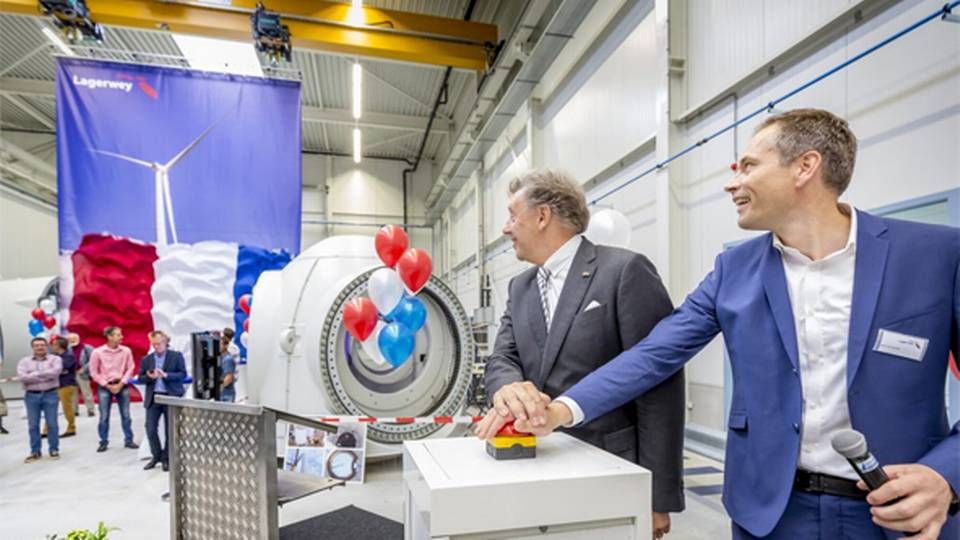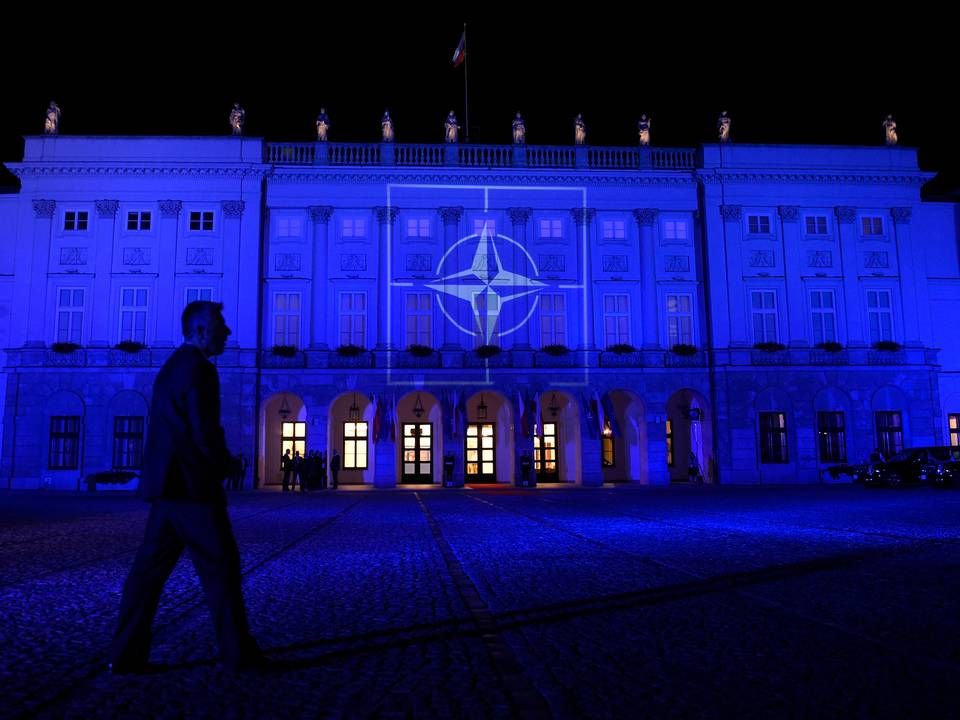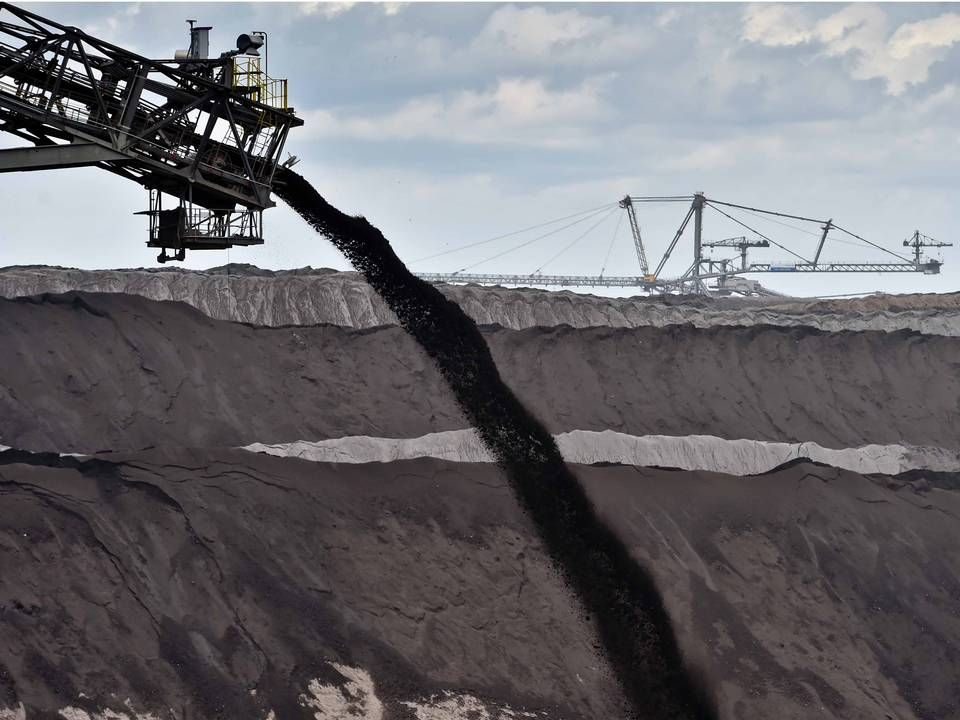Tiny OEM plans to beat Vestas and Siemens in wind growth countries

Wednesday, June 28 2017 marked an extraordinary day for wind power in the Dutch town of Barneveld.
The date marked the inauguration of Lagerwey's new wind turbine factory. This factory will feature double the capacity of the Dutch manufacturer, enabling it to construct 50 turbines per year going forward. Meanwhile, half of the EUR 4.9 million investment was raised via crowdfunding, where locals and other stakeholders could throw small sums of EUR 1,000 at the project.
"First of all I think there is quite a lot of sympathy and support for what we're doing, and it was amazing that within a week we raised the full amount needed. This creates local support which was also quite visible yesterday. Quite a few funders were present, many of those also active in the wind industry," says Lagerwey CEO Huib Morelisse.
One notable feature of the facility is the source of funding. While crowd-funding tends to be associated with small indie rock bands trying to scrimp together the funds for an album release, the turbine manufacturer also enjoyed success via this method.
However, this is hardly the "extraordinary" aspect of the new facility. Even with the expansion boost, capacity still lags 4,124 turbines behind what a company such as Vestas produced last year. Although Lagerwey has been around for almost 40 years, the manufacturer is perhaps better known for surviving a bankruptcy twice than it is for turbines. Only 33 such turbines exist in the megawatt class around the world.
Rather, what is extraordinary about Lagerway's new factory can be traced back to two events in June.
In the middle of the month, Lagerwey inaugurated the turbine "David". With 4.5 MW capacity, it gave the manufacturer a wildcard in the race against the major manufacturers to establish beyond the 4 MW platform. A few days later, Lagerwey signed a contract with Rusatom's subsidiary Otek to be a partner in technology and to help begin the development of the Russian wind market.
Otek has thus far won tenders for the installation of 970 MW in this market.
"We're assisting Otek with quickly getting up to speed in large volumes. We're helping them out, but the idea is that we're truly helping setting up a wind industry for them and for RosAtom," explains the CEO.
The head of licensing and ventures, Sjoerd Sieburgh Sjoedsma, chimes in:
"Number one is the technology. But I think that also it is an advantage that we are a smaller company. We are much more of a willing technology partner. We've seen enormous willingness for people to deal with us, and maybe it's a different perception versus the big players."
The deal with Russia is no ordinary deal. Some of Otek's first turbines will likely be produced at the crowd-sourced factory, which unlike the previous factory, can actually fit the 4 MW turbines through the door of the factory hall. However, despite the use of the Dutch technology, the turbine manufacturer will not actually be producing all the turbines for the Russian firm. In the ramp-up phase Lagerwey will initially assemble the major parts such as the generators in its new facility but over time these activities will be transferred.
The deal states that Lagerwey will assist Otek and Rusatom in constructing their own factories in Russia – build a supply chain for them, instruct on how to best assemble the turbines, as well as transport and maintain them.
In other words, Lagerwey will help transform the wind farm developer into a wind turbine manufacturer.
"We now see major champions wanting to enter the wind business on the wind farm development side, looking for technology. And they can choose between the usual; Siemens, Vestas, or whoever to partner with. But Siemens and Vestas often have their own vested interest in these countries."
"With us as a technology partner they can build up a substantial position in these countries. We see less and less acceptance from certain countries that their subsidy money is basically going to international firms outside their countries."
So it is not only back home in Barneveld that local support a top priority. Looking at the trend on global growth markets, it is common to see governments demanding locally produced content in order to secure local jobs - for example, in Brazil, Turkey, India, and Russia. The current Russian requirement for at least 45 percent of the production to be Russian will rise to 65 percent in 2019.
This is one of the reasons why Vestas announced that it would construct factories in Russia if the order for 1 GW received two weeks ago from Fortum and Rusnano was made set and unconditional. This is also the reason why major developers such as Dong Energy make a point of stating how many jobs will be created locally when they win the task of installing a large offshore wind farm.
Lagerwey plans to help really make development local in the markets that are expected to develop many new GW of wind over coming decades. Sjoerd Sieburgh Sjoedsma says that this is a realistic prospect, even for a small company.
"But what we are now seeing is an additional force in the market. Otek is the daughter of a much larger cooperation with 350.000 people and lots of purchasing power, and we see the same kind of thing happening in markets like India, Japan, Brazil, where you see large companies – real national champions so to speak – considering producing their own wind turbines. They have an edge against the bigger players because of local content requirements."
"In the oil and gas industry you've seen the same thing. In the old days, Shell and the Seven Sisters would rule the world. And now you see the national oil companies stepping up saying that they no longer accept that these national champions will dominate us."
Lagerwey's method has parallels in other industries as well, notes CEO Morelisse. In the consumer market, the concept of white label products, which consumers can brand as their own, has been winning greater shares for some time.
However, this does not mean that the Dutch firm will abandon its ambitions as a turbine manufacturer itself. Last year, two of the manufacturer's five farms in Finland were bought by Japanese investor Eurus, and this type of success story is important to Lagerwey.
"For us that was a kind of a badge of honor – to be able to sell a farm with our turbines to one of the most credible financial partners in the market. They are extremely sophisticated, so they know what they're buying. On the flipside, of course, the financing, the lack of track records does make certain markets a bit more challenging to get a foothold. That's why we've established a two point strategy: Establish a good home marked in Europe combined with the licensing strategy," he says.
"With our turbine technology, the modular steel towers, and a climbing crane, we have a good foundation to be competitive in the industry. I think it's fair to say that if you produce a handful, then relatively speaking your costs are still too high. We will not become a Vestas no. 2. But what you can do is create the critical mass without technology in other markets like the Russian market. "
English Edit: Gretchen Deverell Pedersen
New report shows onshore wind is the cheapest energy
NATO: Forget geopolitics. Cyber attacks are the new energy security threat
Related articles
New report shows onshore wind is the cheapest energy
For subscribers
US railroad executive: Coal has no future
For subscribers

%2520national%2520wind%2520watch.jpg)






















.jpg&w=384&q=75)
